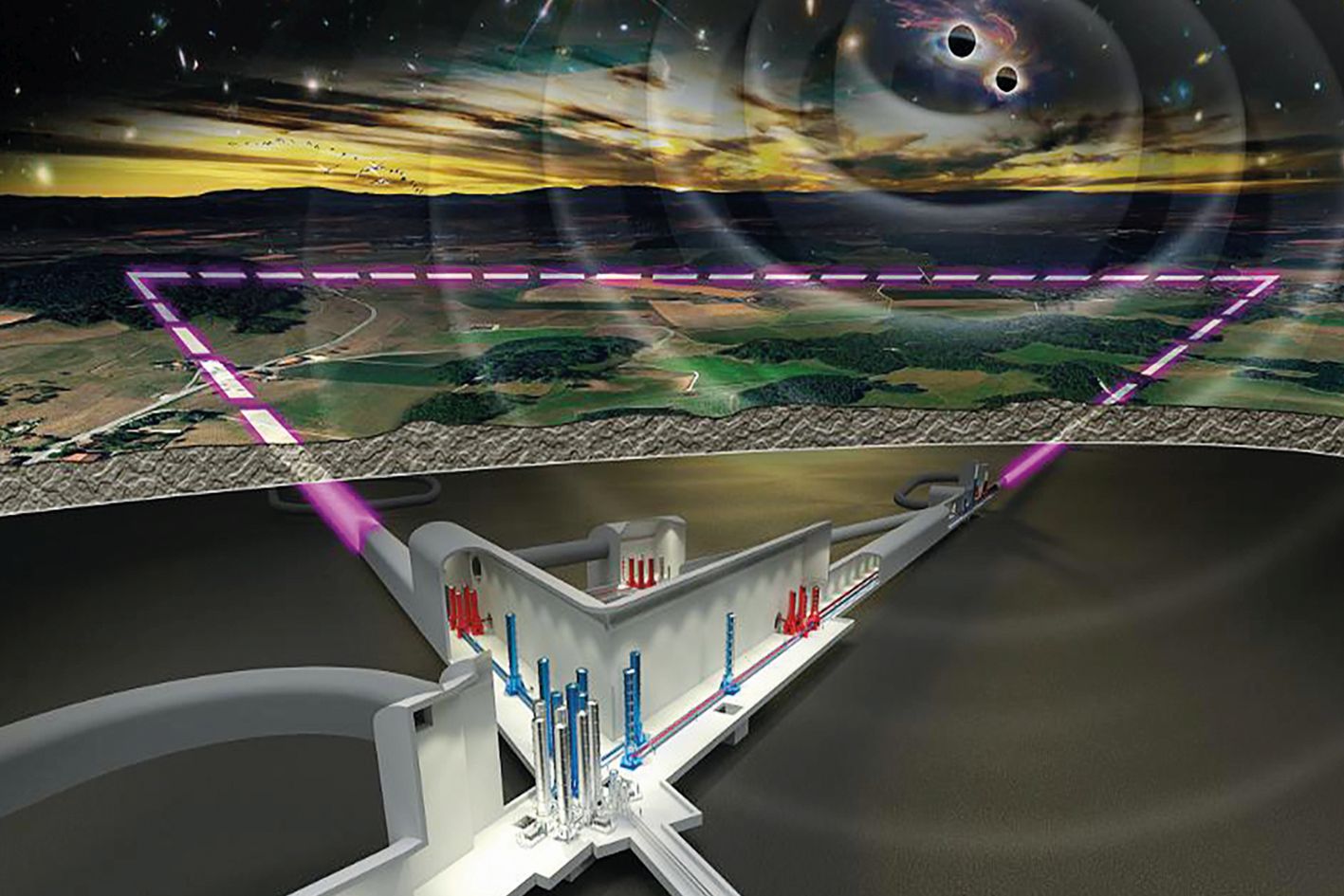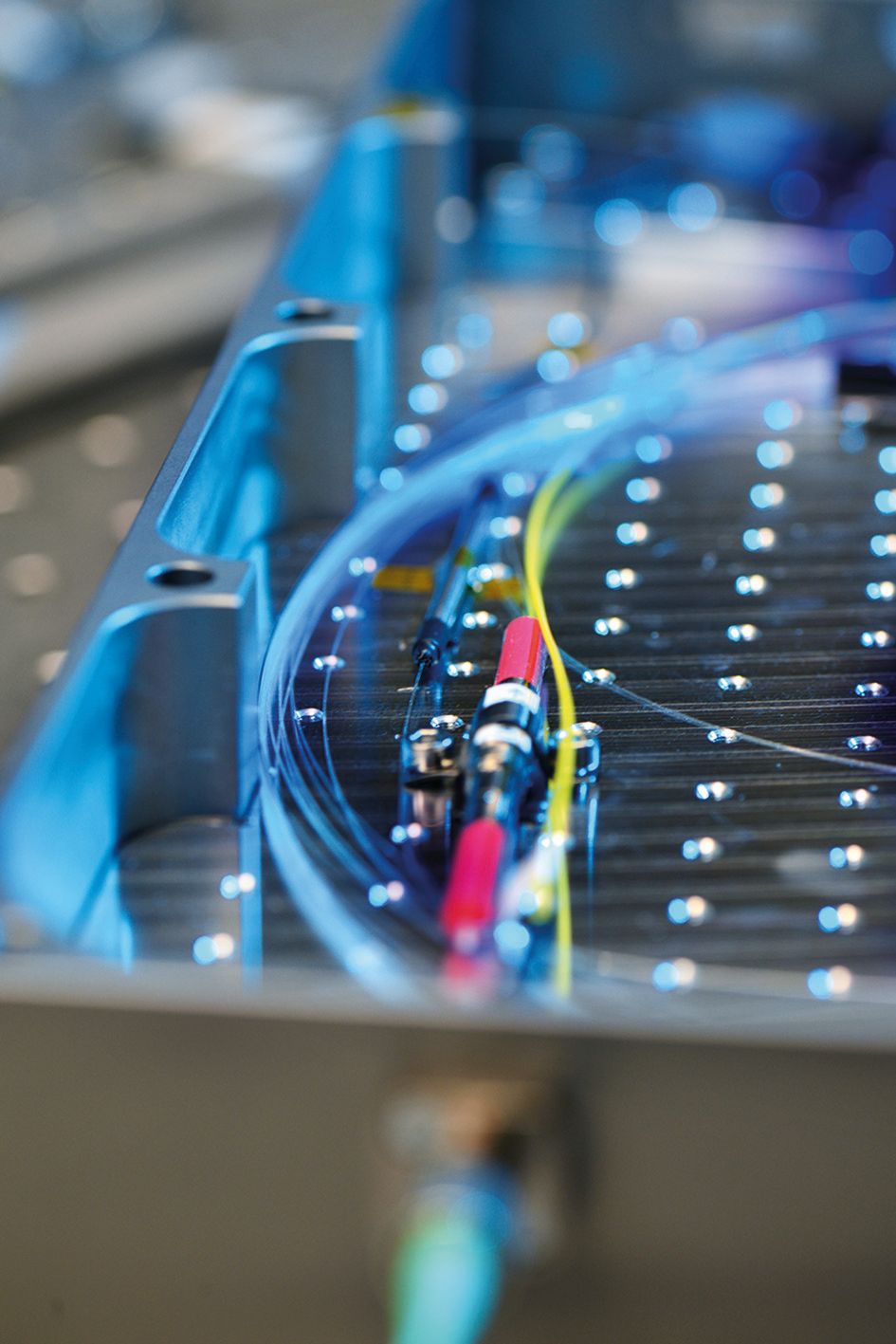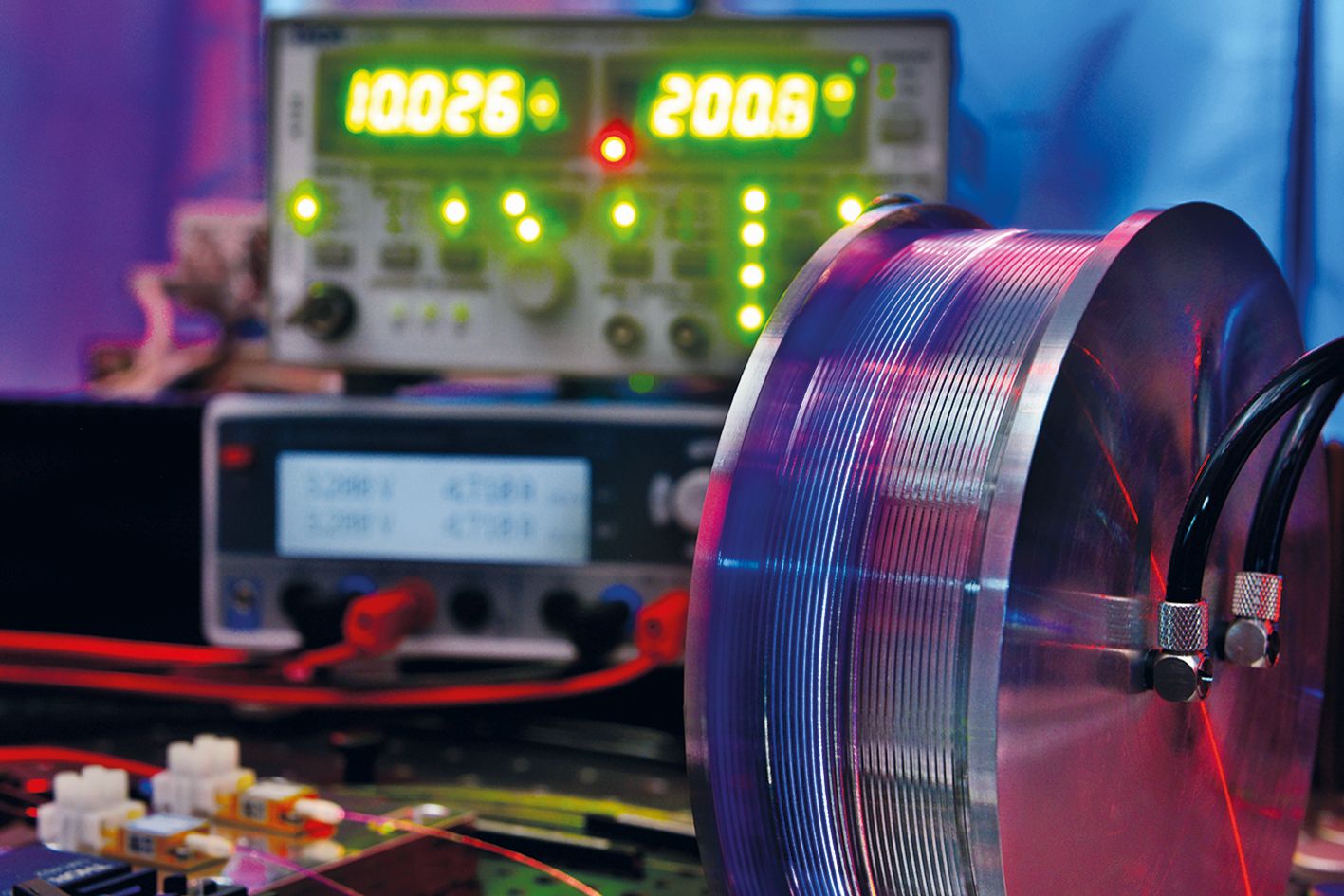How the universe makes gold
The summer of 2017 was an extremely exciting day for astronomers: On August 17, three gravitational wave detectors registered a new signal. Hundreds of telescopes around the world were immediately pointed at the suspected point of origin and a luminous celestial body was indeed seen there. For the first time, the collision of two neutron stars was detected both optically and as a gravitational wave.
Neutron stars are something very special in the universe: They are burnt-out stars that no longer emit any visible radiation. They weigh slightly more than our sun, but squeeze their mass into a sphere less than 20 km in diameter. The force of their collision is so great that atomic nuclei are torn apart, gigantic amounts of mass ejected, and heavy atoms such as gold can be formed.
“Compared to the mass of the neutron stars, it’s not a lot of gold that is created – just a few lunar masses,” explains Professor Achim Stahl, an astrophysicist from RWTH Aachen University, with a grin. “But researchers are pretty sure that most of the gold in the universe was created in such gigantic explosions.” Therefore, the golden ring we wear on our finger has already experienced galactic history.
Gravitational wave detectors open a new chapter in astronomy
Thanks to gravitational wave detectors, we already know more about the collisions of neutron stars. By galactic standards, these are very fast processes. In the past, if we were very lucky, we could register gamma-ray bursts which lasted less than a second. When black holes collide, the signal that can be measured with current gravitational wave detectors is very short. The signal of the first gravitational wave measured in 2015 was just over 0.2 seconds long. Such waves are created when ultra-heavy objects orbit each other in the universe and then collide.
The signal detected in summer 2017 was 100 seconds long, so it was immediately clear that this must be something new. Shortly after the gravitational signal stopped, the gamma-ray burst was recorded; later the afterglow of the explosion was observed in various wavelength ranges, and traces of heavy elements such as gold and platinum were detected. The event was identified as a collision of two neutron stars. The simultaneous observation of gravitational waves and electromagnetic signals opened a new chapter in observational astronomy. “In fact, the optical signal was decisive in finding the star in the sky,” explains astrophysicist Stahl.
Our “ears” to the universe
For centuries, astronomy was limited to observations of visible radiation. With a better understanding of the electromagnetic spectrum, astronomers added many new observation methods, detected radio waves and significantly expanded mankind’s knowledge through calculations and simulations.
When Albert Einstein postulated his general theory of relativity a good hundred years ago, he also came up with the idea that there could be waves that have nothing to do with the electromagnetic spectrum. Similar to a sound wave, they were supposed to make a test specimen at a great distance “wobble” a little. Large accelerated masses should send such waves through space. On Earth, however, the wobble caused by gravitational waves is so weak that the movement is much smaller than the diameter of an atom. Nonetheless, it has now become possible to measure gravitational waves. This is a new era for astronomers.
This is made possible by so-called laser interferometers. They consist of two arms with mirrors at the ends. A laser beam enters the interferometer and is split at a beam splitter in the middle. It travels to the end mirrors in the two arms and back to the beam splitter. If the position of the mirror at the end of an arm changes, the transit time of the respective laser beam varies by a tiny amount. This amount can be measured by comparing the laser beam from the affected mirror with a laser beam from the other interferometer arm where the mirror has not been moved.
The precision of this measurement in the current gravitational wave detectors is always astonishing, even for physicists: “We measure down to an accuracy of less than one two-thousandth of a proton diameter,” explains Professor Stahl. As a reminder, protons are the components of atomic nuclei. “It’s ironic that we need precision on the scale of the smallest particles known to us to detect the biggest events in the universe, the merging of black holes,” he adds pensively.
The first attempts to measure gravitational waves were made back in the 1960s. However, it is only the current second generation of laser measuring devices that can achieve this extreme accuracy and have now detected around 100 collisions of black holes or neutron stars.
The Einstein Telescope
Professor Stahl is a member of the German Einstein Telescope community and is currently working on the next generation of gravitational wave detectors. Measuring devices of this third generation should be ten times more sensitive than those currently in use. The planned gravitational wave observatory has been named “Einstein Telescope” after the founder of the general theory of relativity. “We want to use it to examine area that is a thousand times larger than what is possible today in the universe for gravitational waves. And we should then find considerably more sources for which the current instruments are not sensitive enough,” explains the astrophysicist. This also applies to heavier objects that emit gravitational waves at lower frequencies.
The Einstein Telescope will consist of three nested detectors. Each of these detectors will have two laser interferometers with 10 km long arms. In order to shield as much interference as possible, the observatory shall be built 250 m underground.
However, the scientists are already thinking much further ahead: “The Einstein Telescope will work together with a new, innovative generation of observatories in the electromagnetic spectrum ranging from radio to gamma rays. We call this multi-messenger astronomy,” says Professor Stahl, describing the vision. “In addition to the ‘ears’ for the gravitational waves, we will also have ‘eyes’ that detect very different signals. Together, these will provide a live transmission of cosmic events that no one has ever seen before.”
Until now, you could watch the sky at random and hope for a brief flash. In future, the gravitational wave detectors will run continuously and “listen” when a signal appears. If several such detectors capture the signal, its region of origin can be calculated and other optical telescopes aligned with it. As with the neutron star collision in summer 2017, several systematic measurements will then be possible. Scientists hope to gain many new insights from this, for example, about the early universe or about collisions in which all elements heavier than iron were formed.
Detectors in Europe and around the world
Such complex measurements require global cooperation. Accordingly, a conceptual design of a third-generation detector is also being developed in the USA: The “Cosmic Explorer” will form a global detector network with the Einstein Telescope. In 2021 the Europeans included the Einstein Telescope in the roadmap of the European Strategy Forum on Research Infrastructures (ESFRI). ESFRI was founded in 2002 to enable national governments, the scientific community and the European Commission to jointly develop and support a concept for research infrastructures in Europe.
With its inclusion in the ESFRI Roadmap, the Einstein Telescope has entered the preparation phase. The budget has been estimated at 1.8 billion euros. Operation is expected to cost around 40 million euros per year. Construction is scheduled to begin in 2026, with observations due to start in 2035.
Studies are currently underway to select a site. A decision is expected in 2024. Two possible sites are currently being investigated: one in Sardinia and one in the Euregio Meuse-Rhine in the border triangle between Germany, Belgium and the Netherlands. When evaluating the sites, the research partners must not only take the feasibility of construction into account, but also predict the extent to which the local environment will impact the sensitivity and operation of the detector.
The project promises a number of benefits for the region concerned: A large proportion of the costs of 1.8 billion will go towards construction measures. Three times ten kilometers of tunnels and twelve times ten kilometers of vacuum pipes are needed, to name just two examples. A substantial number of companies are already involved in the project.
A large team is already working on the actual measurement equipment at various locations. In addition to RWTH Aachen University, this also includes the Fraunhofer Institute for Laser Technology ILT in Aachen. New lasers are currently being developed there, without which the new measurements would not be possible. “What we are developing here for potential use in the Einstein Telescope is unique in its design and is intended exclusively for measuring gravitational waves,” confirms project manager Patrick Baer from Fraunhofer ILT, who as Research Unit Leader in the Einstein Telescope community represents research groups from the Fraunhofer Institutes for Laser Technology ILT and for Production Technology IPT as well as the Chairs for Laser Technology LLT and for Technology of Optical Systems at RWTH Aachen University. “In a simplified version, however, the laser technology developed for this area of application may also be of interest for other applications, e.g. in quantum technology. But the knowledge gained can also be helpful for the development of lasers in medical technology: The wavelength of 2 µm is suitable for shattering kidney and bladder stones, for example.” Ultimately, this is what Fraunhofer ILT has been doing since its foundation: making high-end lasers from research fit for industrial applications.
Funding has not yet been fully secured. Professor Stahl expects a final decision in the next two years. First the planners will start their work, then the tunnel builders, and finally the laser physicists. “I estimate that we will be able to take the first measurements in 2035.”
What fascinates a researcher like Achim Stahl? “With gravitational waves, we can look much further into the universe than with normal telescopes,” explains the astrophysicist. “In astrophysics, looking further into the universe means – above all – looking back in time. With the Einstein Telescope, we will receive signals from the time when the galaxies and the first stars were formed. This goes back further than is possible with optical means. And we will hear cosmic explosions live with the gravitational waves before we see them.” The more sensitive detectors of the Einstein Telescope will “hear” the signals earlier and give the other telescopes more time to align themselves. In the past, it was more of a lucky coincidence to see such an event. Now, for the first time, systematic measurements are possible. Exciting times are dawning – and not just for astrophysicists.
The work was supported in part by Interreg EMR, European Regional Development Fund (EFRE), and in part by the Ministry for Economic Affairs, Innovation, Digitalization and Energy of the State of North Rhine-Westphalia.
 Fraunhofer Institute for Laser Technology ILT
Fraunhofer Institute for Laser Technology ILT

